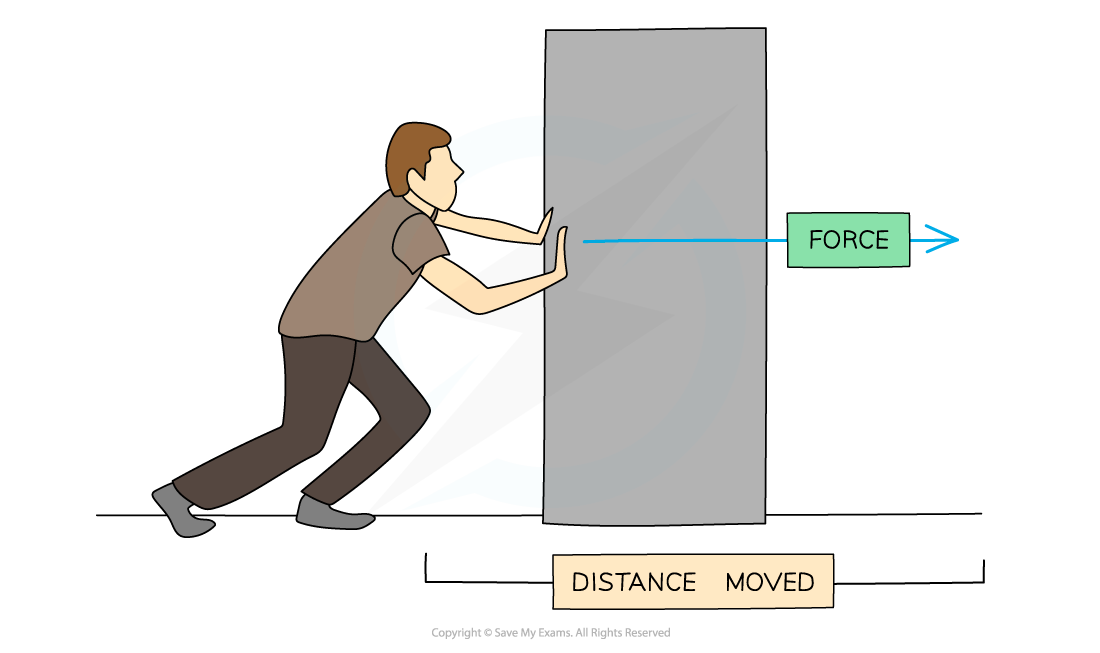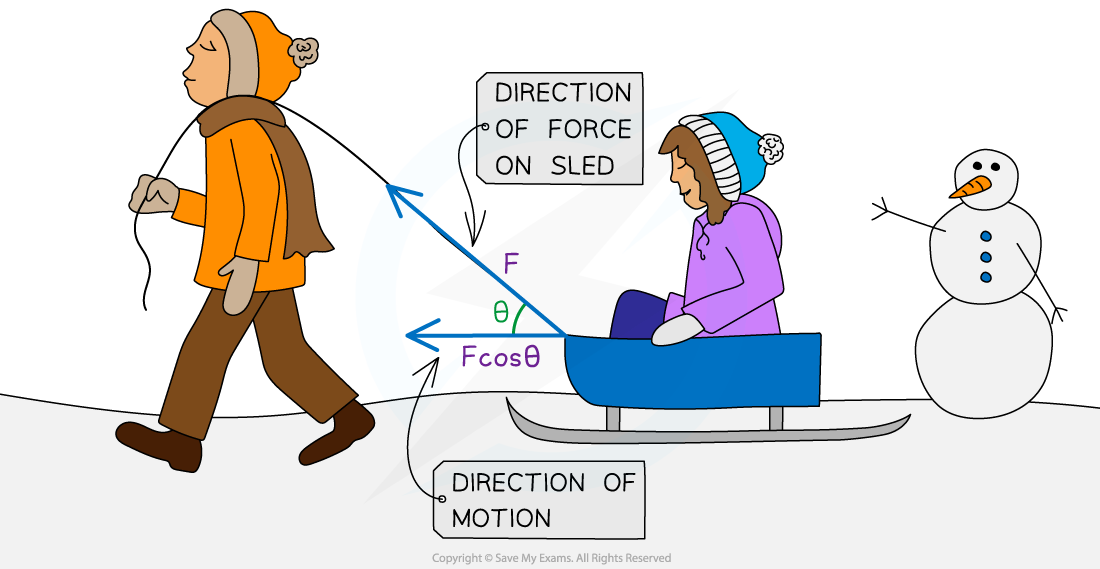Work (Edexcel International AS Physics): Revision Note
Exam code: XPH11
Work
Work is defined as
The amount of energy transferred when an external force causes an object to move over a certain distance
If the force is parallel to the direction of the object's displacement, the work done can be calculated using the equation:
Where:
ΔW = change in work done (J)
F = average force applied in the direction of the motion (N)
s = displacement (m)
Force in the direction of the motion means that when a force is applied at an angle, the component in the direction of motion is used in the calculation
In the diagram below, the man’s pushing force on the block is doing work as it is transferring energy to the block

Work is done when a force is used to move an object over a distance
When pushing a block, work is done against friction to give the box kinetic energy to move
The kinetic energy is transferred to other forms of energy, such as heat and sound
Usually, if a force acts in the direction that an object is moving, then the object will gain energy
If the force acts in the opposite direction to the movement, then the object will lose energy
Calculating with Force at an Angle
Sometimes the direction of motion of an object is not parallel to the direction of the force
If the force is at an angle θ to the object's displacement, the work done is calculated by:
W = Fs cos θ
or
W = Fs sin θ
Where
θ = the angle, in degrees, between the direction of the force and the motion
When the angle is between the force and the horizontal, use cosine
When the angle is between the force and the vertical, use sine
The component needed is the one that is parallel to the displacement

When the force is at an angle, only the component of the force in the direction of motion is considered for the work done
Worked Example
The diagram shows a barrel of weight 2.5 × 103 N on a frictionless slope inclined at 40° to the horizontal.

A force is applied to the barrel to move it up the slope at a constant speed. The force is parallel to the slope.
What is the work done in moving the barrel a distance of 6.0 m up the slope?
Answer:
Step 1: Write the known values from the question
Force acting downwards, F = 2.5 × 103 N
Angle of the slope, θ = 40°
Displacement, s = 6.0 m
Step 2: Find the force in the direction of motion by resolving the forces
Draw a diagram, showing the weight acting downwards
Resolve the weight into two components
The first component is parallel to the slope - the same as the direction of the motion; this is W sin θ
The second is at right angles to the slope, showing the normal reaction force (this component, W cos θ is not used in this answer)

Force acting along the slope,
Step 3: Write the equation for work done and substitute in the values
Step 4: Give the answer to the correct number of significant figures
or
Examiner Tips and Tricks
A common exam mistake is choosing the incorrect force which is not parallel to the direction of movement of an object.
You may have to resolve the force vector first in order to find the correct, parallel component.
The applied force does not have to be in the same direction as the movement, as shown in the worked example. In fact, in most cases, we apply a force at an angle to move something, because it saves us having to lean down to the height of whatever we are pulling or pushing!

Unlock more, it's free!
Did this page help you?